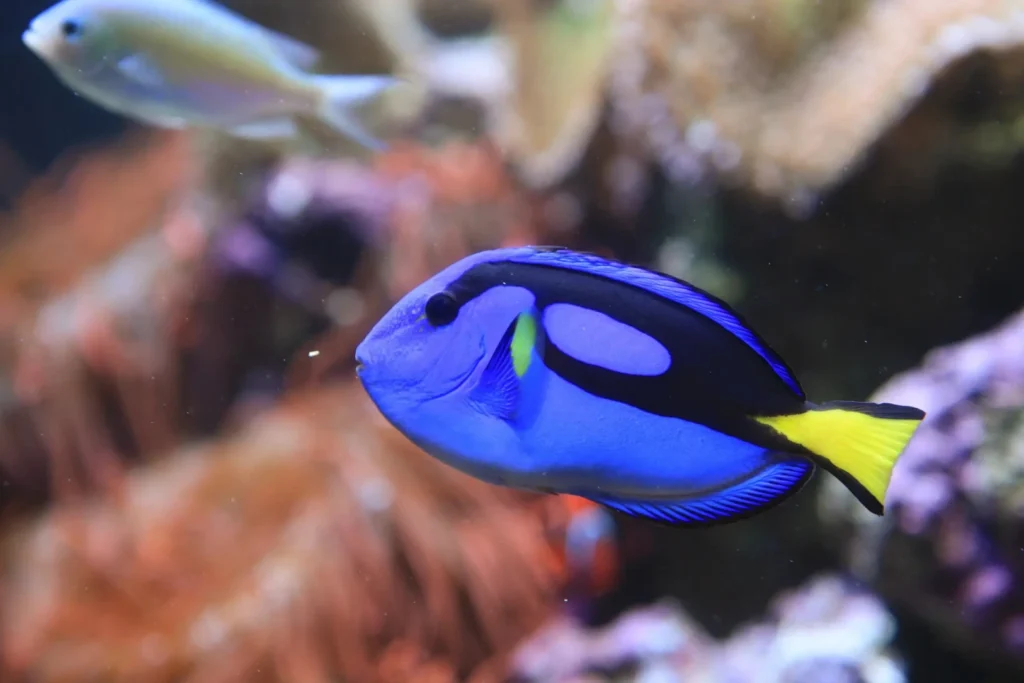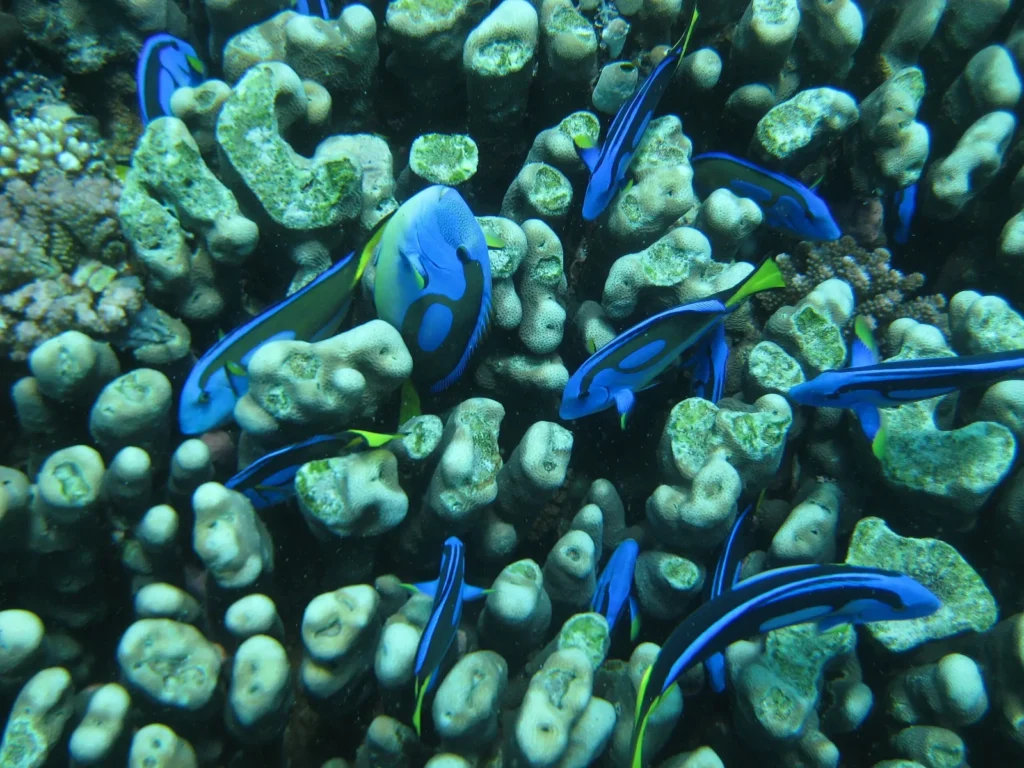The surgeon fish is not only one of the brightest and most beautiful inhabitants of coral reefs, but also a real “warrior” of the underwater world. It got its name from sharp bone plates near the tail, which resemble scalpel blade. This feature makes the surgeon fish a dangerous opponent even for larger predators.
🔹 Why is the surgeon fish unique?
✔ It lives among corals and actively cleans reefs of algae
✔ It has a bright color that attracts aquarists all over the world
✔ It is armed with sharp "blades" that help it defend itself from predators
✔ An important species for the marine ecosystem due to its role in keeping reefs clean
Let's take a closer look at this incredible fish!

Scientific classification
🔬 General taxonomy of surgical fishes:
✔ The Kingdom: Animals (Animalia)
✔ Type: Chordal (Chordata)
✔ Class: Lucheperi pisces (Actinopterygii)
✔ Row: Perch-like (Perciformes)
✔ Family: To the surgeon (Acanthuridae)
✔ Gender: Acanthurus, Paracanthurus, Zebrasoma and others
✔ Popular views:
• Paracanthurus hepatus (Blue Surgeon, "Dory" from Finding Nemo”
• Acanthurus leucosternon (White-cheeked surgeon)
• Zebrasoma flavescens (Yellow surgeon)
📌 Interesting!
Family Acanthuridae contains more than 80 species of surgical fish, which differ in size, color, and behavior.
Appearance and features of the anatomy
🔹 Main Features:
✔ Streamlined, oval body, compressed at the sides - provides maneuverability in the water
✔ Bright colors - from blue to yellow and striped
✔ Armed with " scalpels” - sharp bony plates near the tail
✔ Long mouth with small teeth - adapted to eating algae
🔹 Sizes:
✔ Average length: 15-30 cm
✔ Maximum length: 40-50 cm in some species
📌 Interesting!
In most species the "scalpel" is located on both sides of the caudal fin. It is used by fish as a means of defense or to fight for territory.
Range and habitat
🌍 Where does the surgeon fish live?
✅ Indian, Pacific and Atlantic oceans
✅ Tropical and subtropical reefs of the Caribbean Sea, Red Sea, Great Barrier Reef
✅ Habitat depths: from 1 to 50 meters
📌 Interesting!
Some species can adapt to the conditions of artificial reefs, and Acanthurus coeruleus it is sometimes found even in coastal mangroves.
Life cycle and reproduction
🔹 Life cycle:
✔ Life span: 5-15 years old
✔ Puberty: occurs at the age of 1-3 years
🔹 Reproduction:
✔ Spawning occurs in open water - males and females release caviar and milk at the same time
✔ Small, pelagic caviar, after hatching, the larvae become part of the plankton
✔ Young individuals gradually settle on the reefs
📌 Interesting!
Larvae of surgical fish they don't look like adults at all. They have translucent bodies and a long development that protects them from predators.

Nutrition and behavior
🔹 What does the surgeon fish eat?
✅ Basic diet:
* Seaweed
* Plankton (some species)
* Small invertebrates (sometimes)
🔹 Nutrition strategy:
✔ Actively grazes on reefs, eating algae
✔ Generates packsto clean up reefs more effectively
✔ Some species have the following symptoms: territorial behavior "they protect their' pastures”
📌 Interesting!
Some types of surgical fish can form a symbiosis with other reef species, together clearing the surface of fouling.
Role in nature and interaction with other species
🌊 Why is the surgeon fish important?
✔ Controls algae growth on corals
✔ Serves as an important link in the food chain
✔ Helps maintain the balance of the reef ecosystem
📌 Interesting!
Without surgical fish, algae could completely drown out corals, leading to the death of reefs.

Meaning for people
🔹 Popularity in aquariums:
✅ Very beautiful, but they are fastidious in their care
✅ Need large aquariums (200-500 l)
✅ Sensitive to changes in water parameters
🔹 Value in industry:
In some regions, surgical fish are caught for food
✅ Have toxic meat due to the accumulation of toxins from algae
📌 Interesting!
Blue Surgeon (Paracanthurus hepatus) became world famous thanks to the cartoon” Finding Nemo", where he is depicted as Dory the fish.
Conclusion
🐠 The surgeon fish is not just a beautiful inhabitant of reefs, but a real "orderly" of the ocean, which helps to keep corals alive.
Due to its ecological role, it is crucial for marine ecosystems.
💡 If you had the opportunity, what kind of surgeon fish would you like to have in your aquarium? 🧐✨